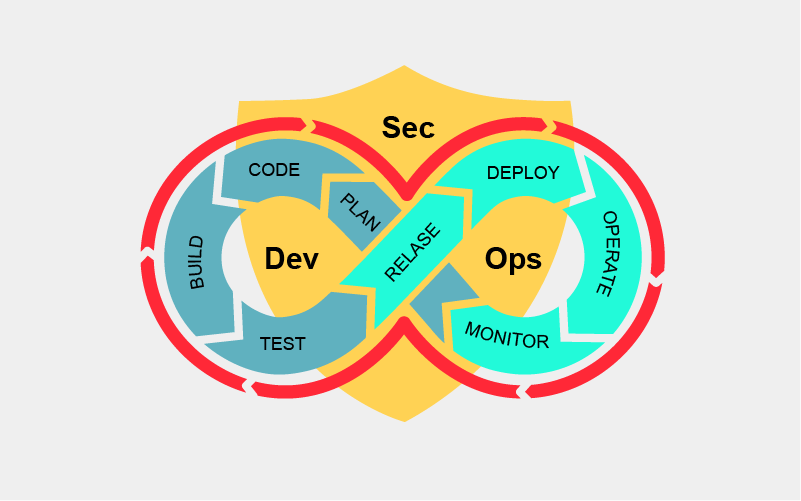The Key to DevSecOps: Integrating Security into the Development Process
In today's fast-paced software development landscape, the need for secure applications has never been greater. DevSecOps, a methodology that combines development (Dev), operations (Ops), and security (Sec), emerged as a response to the growing demand for security-centric development practices. By integrating security into every phase of the development process, DevSecOps enables organizations to build and deliver secure software efficiently. In this article, we will explore the key principles and practices that define DevSecOps and its importance in modern software development.
- Shift Left Security:
A fundamental principle of DevSecOps is "shift left" security, which emphasizes integrating security practices as early as possible in the development process. Rather than treating security as an afterthought, DevSecOps encourages developers to consider security requirements from the project's inception. By incorporating security from the beginning, developers can proactively identify and address potential vulnerabilities, reducing the likelihood of security issues surfacing in later stages. This approach ensures that security is ingrained into the development culture and minimizes the need for last-minute fixes or patches.
- Collaboration and Communication:
DevSecOps emphasizes collaboration and communication among development, operations, and security teams. Traditionally, these teams operated in silos, resulting in a fragmented approach to security. DevSecOps breaks down these barriers, promoting cross-functional collaboration and fostering a shared responsibility for security. By working together, teams can leverage their unique expertise and perspectives to identify potential security risks, implement best practices, and establish effective security controls. This collaborative approach enables faster and more efficient resolution of security issues and ensures a holistic approach to security throughout the software development lifecycle.
- Automation and Continuous Security:
Automation is a key enabler of DevSecOps, allowing for the continuous integration and delivery of secure software. By automating security processes, such as vulnerability scanning, code analysis, and compliance checks, organizations can detect and address security issues in real-time. Automated security testing and monitoring help identify vulnerabilities early, enabling prompt remediation and reducing the risk of security breaches. Continuous security practices ensure that security remains an ongoing focus throughout the development cycle, providing timely feedback and enabling rapid iterations and improvements.
- Secure Coding Practices:
DevSecOps encourages the adoption of secure coding practices to minimize vulnerabilities in software. Developers are trained in secure coding techniques, such as input validation, output encoding, and secure authentication and authorization mechanisms. Secure coding guidelines and standards are established, and tools are utilized to detect and prevent common coding vulnerabilities, such as cross-site scripting (XSS) or SQL injection. By following secure coding practices, developers can proactively mitigate security risks, enhance the resilience of applications, and foster a security-conscious development culture.
- Continuous Monitoring and Response:
DevSecOps recognizes that security is an ongoing process and requires continuous monitoring and response. Real-time monitoring tools are employed to detect and respond to security incidents promptly. Security logs and event data are analyzed to identify potential threats or anomalies. Additionally, incident response plans and processes are established to enable efficient and coordinated responses to security breaches. Continuous monitoring and response ensure that security measures are constantly evaluated and adapted to evolving threats and vulnerabilities.
- Education and Awareness:
Developers, operations teams, and security professionals need to stay abreast of the latest security practices, threats, and vulnerabilities. DevSecOps emphasizes the importance of education and awareness by providing training programs, workshops, and resources to keep teams updated on emerging security trends. By fostering a culture of continuous learning and knowledge sharing, organizations can empower their teams to make informed security decisions, contribute to risk mitigation efforts, and champion secure development practices.
In conclusion, DevSecOps represents a significant shift in mindset and practices, placing security at the forefront of software development. By integrating security into the development process, organizations can build robust and secure software, reduce the risk of security breaches, and protect sensitive data. The key principles of DevSecOps, including shift left security, collaboration, automation, secure coding, continuous monitoring, and education, lay the foundation for a holistic and proactive approach to security. Embracing DevSecOps allows organizations to deliver secure applications faster, adapt to evolving security threats, and build a strong security posture in an increasingly interconnected and vulnerable digital landscape.
Read Also: BEGINNER'S GUIDE TO DEVSECOPS: INTEGRATING SECURITY INTO DEVELOPMENT

